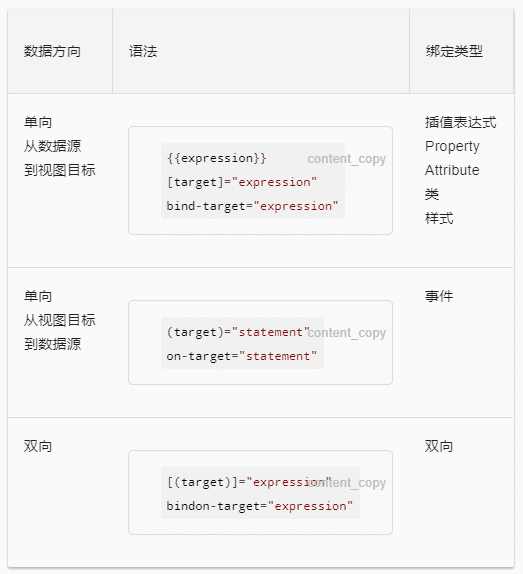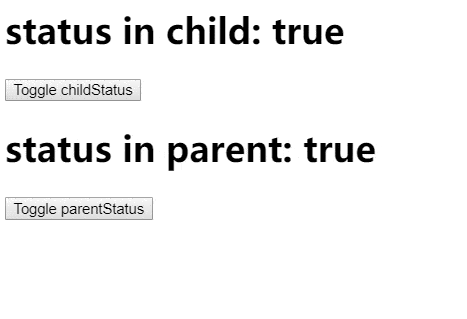学过Angular的同学都知道,表单组件通过[(ngModel)]实现双向数据绑定,那我们能不能实现自己的双向数据绑定呢?答案是肯定的。 Angular中,我们常常需要通过方括号[]和圆括号()实现组件间的交互:

那么在[]和()的基础上,如何实现组件的双向数据绑定? 例子如下。 子组件:
<!--child.component.html-->
<h1>status in child: </h1>
<button (click)="toggle()">Toggle childStatus</button>
//child.component.ts
export class ChildComponent implements OnInit{
@Input() childStatus;
@Output() childStatusChange = new EventEmitter();
ngOnInit(){
}
toggle(){
this.childStatus = !this.childStatus;
this.childStatusChange.emit(this.childStatus);
}
}
注意这里的写法,这是关键所在,输出属性必须在输入属性的基础上加上‘-Change’后缀。比如你的输入属性是myData,那么输出属性就必须是myDataChange。
父组件:
<!--app.component.html-->
<test-binding [(childStatus)]="parentStatus"></test-binding>
<h1>status in parent: </h1>
<button (click)="toggle()">Toggle parentStatus</button>
//app.component.ts
import { Component,OnInit } from '@angular/core';
@Component({
selector: 'my-app',
templateUrl: './app.component.html',
styleUrls: ['./app.component.css']
})
export class AppComponent implements OnInit{
parentStatus: boolean = true;
ngOnInit(){
}
toggle(){
this.parentStatus = !this.parentStatus;
}
}
在父组件我们初始化parentStatus为true,并把它传到子组件ChildComponent。 在子组件里,通过按钮我们可以改变childStatus的值,可以看到,子组件中的值改变的同时,父组件的值也跟着改变了。反过来,在父组件中通过按钮改变parentStatus的值,子组件中的值同样也跟着变化:

很简单对不对?! 你可以在这里查看和在线编辑本文代码,并实时查看效果!